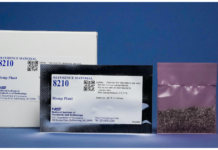Cannabis may be the ultimate natural medicine, but it has a terrible reputation for environmental destruction. The myths range from partially true to borderline slanderous. Fertilizers and pesticides used on sun-grown plants can endanger local ecosystems by leaching into water sources and poisoning other crops. In the aggregate, indoor grows use more electricity than bitcoin and more water than almonds. Even packaging often is viewed with exasperated scorn, sometimes within the industry itself.
These perceptions are either flat-out false or increasingly outdated. Nevertheless, the image hangs heavily over many precincts in the industry and is most keenly felt by the men and women who are most passionate about sustainability.
To set the record straight, one cannabis plant requires approximately one gallon of water per day for each pound of processed flower. That’s a lot, but not compared to the unquenchable thirst of a single almond: 1.2 gallons daily. (That’s one nut, not the entire tree.) In fact, according to a report published by the Journal of Environmental Management, “a single large almond farm in the Central Valley [of California] utilizes thirty-three times more water than all permitted Humboldt [County] cannabis farms combined.”
On top of that, sophisticated building materials and environmental controls have dramatically reduced the energy greenhouses and indoor grows require to maintain humidity and light. The legal industry maintains illicit growers are the ones with a heavy hand — not the legal cultivators who play by state and municipal regulations.
However, leaving a smaller carbon footprint requires money and patience many small operators and family farms simply cannot afford. Publicly traded companies routinely disclose their environmental impact, as do many proud organic and regenerative farmers The latter face a significant uphill financial battle, since sales of organic flower is, at this point, not quite robust. Consumers are mostly driven by price, and plants grown in accordance with organic principles usually cost more than the weed farther down the shelf.
How important is a small carbon footprint to cannabis consumers? Market research specific to the industry is somewhat spotty, but consider this: More than 300,000 people marched in New York City’s September 2016 climate protest, and millions more turned out for subsequent demonstrations in California, Colorado, Connecticut, Idaho, Illinois, Maine, Massachusetts, Michigan, Missouri, North Carolina, Oregon, Pennsylvania, Vermont, Washington state, and Wisconsin. Not everyone consumes plant medicine, but these staggering numbers illustrate an escalating concern about the health of our land, water, and air. The majority of climate activists are Gen X, millennials, and Gen Z — the demographics most comfortable with cannabis.
So far, the climate crisis is less important to the federal government than economic growth, but lawmakers eventually will take notice when more Americans use their vote to express their opinion. This is especially important to the cannabis industry, and not just because so many businesses and corporations expect to prosper as soon as the feds lift prohibition. Laws will standardize practices, which will level the playing field and streamline operations that currently vary from state to state.
Most environmental groups acknowledge cultivation and packaging have improved but say there’s still a long way to go before the industry achieves maximum sustainability. They also advise consumers to be cautious about claims that might amount to little more than greenwashing.
Much of the cannasphere’s evolution depends on federal legalization, but no one knows when this will happen. Estimates range from “when the Republicans lose Congress” to “not in my lifetime.” The Senate has no appetite for the Secure and Fair Enforcement (SAFE) Act or the Marijuana Opportunity Reinvestment and Expungement (MORE) Act, and many in the industry say the likelihood of a Republican sweep in November is further disheartening.
In the meantime, non-governmental organizations, universities, and the private sector are stepping up research and certification programs to spur public confidence and support.
Ladybugs and donuts
Staci Jenkins will eat only organic food and won’t smoke anything that isn’t farmed to the highest standards. “If it has pesticides and chemicals, what good is it doing me?” asked Jenkins, who started Meraki Gardens to grow her own medicine. The company’s crop is biodynamic, certified sustainable, and kosher. “I believe in this,” she said.
Graham Farrar, cofounder and president of Glass House Brands, has leaned into multimillion-dollar cogeneration systems that use natural gas to make electricity and heat simultaneously. The systems are so efficient they retain and reuse energy and can reduce carbon dioxide emissions by as much as 60 percent. “It’s good for business and it’s good for the environment,” said Farrar, a former tech executive. “You get what you pay for, and I’m happy as a customer, citizen of our planet, and business owner.”
Jenkins and Farrar are not alone.
Consumers are slowly opting for organic or naturally grown cannabis, even though it usually sells for a premium in an industry increasingly driven by price-consciousness. Not surprisingly, ecologically minded members of the industry want to set themselves apart with voluntary certification. While there is no standardized definition of organic, Clean Green Certified (CGC) is the industry’s most widely used benchmark.
“When I started, the black market was turning gray,” recalled Chris Van Hook, who created for-profit CGC twenty years ago. The program now counts some 110 members. In the beginning, “there was suspicion all around.” The former abalone farmer said he would break through to one grower who would invite his friends over to listen to Van Hook’s pitch. “I didn’t even try to blend in,” he said. “I would bring a box of donuts and a box of coffee and call it an industry meeting.”
CGC inspects cultivation sites and practices per United States Department of Agriculture organic regulations to uphold program standards. “Organic-ish and regenerative farms don’t automatically reach for a pesticide. They first go into the field to see if pests are present,” Van Hook said. They also accept that more natural cultivation might decrease yields or increase costs.
The benefits of a smaller footprint are widely known, but the perceived expense and effort are a turnoff. Van Hook estimated only 5 to 7 percent of cannabis is organically grown. “The other 93 percent don’t give a hoot about it,” he said. “Maybe 15 to 20 percent of consumers say they look for cannabis from sustainable farms.”
Indeed, the industry as a whole does not appear to be overly concerned about its carbon footprint. None of the ten presentations at the MJ Unpacked event in New York City in May focused on sustainability, and only a few manufacturers, processors, and cultivators called sustainability a priority. On the other hand, marketing people mentioned the concept more often.
“We know what to do and we know how to do it,” said Mitch Galton, director of business development for urban-gro Inc., a company that designs and builds custom controlled-environment systems. The most sustainable greenhouses and grow rooms now are lit with LEDs, which require less electricity and produce less heat than more traditional high-pressure sodium vapor lamps. Today’s water reclamation and purification systems are more expensive than creakier iterations, but they save on long-term operating expenses and are catching on with commercial growers.
That said, all farmers can benefit from improvements to their existing grows. Galton advises older farms to maximize their yields by optimizing their setups. Keeping plants on wheeled carts and multi-tiered racks will make the most of cubic space. Maintaining older equipment is vital for both environmental and economic benefits. Skimping on the HVAC is a big mistake, leading to mold, pests, and disappointing yields.
Glass House recently opened the largest greenhouse in the United States. The Santa Barbara, California, facility comprises 5.5 million square feet of natural sunlight and state-of-the-art mechanical systems. Less than half the greenhouse is planted currently, but Farrar expects to scale up when the product becomes fully legal. “Grow cannabis where it is supposed to grow, and you’ll get a better product using less energy,” he said.
Holly Hillyer is not impressed. She is the owner and master herbalist at Utokia, a 750-square-foot micro-grow about the size of a Manhattan one-bedroom or a suburban lawn. Hillyer said she and her husband are emotionally sustained by the farm, where they grow between 150 and 200 pounds of flower per year.
“We are not all about profit, and we have no grandiose plans to expand,” she said. All of Utokia’s used soil goes into the back field for garlic, and the leaves the goats don’t eat are composted.
More cultivators of all sizes are shifting into sustainability, but until the government that regulates them also rewards them with rebates for energy efficiency and water credits, progress will continue to be limited unless farmers and chief executives pursue sustainability with passion.
Ocean plastic and retail waste
Packaging executive Elizabeth Corbett has heard all of this, of course, and she’s not offended. In fact, she mostly agrees. “Look, I don’t want to ruin the environment either,” said Corbett, who serves as vice president of sales for AE Global. She points out every state has different package regulations for retail sales.
Idiosyncrasies abound. Washington state allows clear packaging, but Alaska does not. Florida requires products to be wrapped in white. Maine prohibits depictions of animals and humans. Michigan spells marijuana with an H instead of a J. “The amount of language required by some states, you need a booklet or have to make a larger package,” Corbett said of warnings and other information.
And then there is child-resistant packaging. All legal states want cannabis products wrapped in clearly labeled containers that are difficult for tiny teeth and fingers to rip apart, but every state mandates safeguards in its own way. For example, Washington state requires each gummy in a ten-pack to be individually wrapped. “That’s a lot of packaging, but it’s for a good reason,” said Corbett.
However, regulations are not the only complication in designing and manufacturing. Corbett, who did similar work for Estée Lauder, compares cannabis’s concentrates, flower, pre-rolls, and edibles to the beauty industry’s lipsticks, foundations, toners, and moisturizers: Each product is a unique size and shape with varying degrees of fragility and shelf stability. Every item needs its own appropriately sized housing to keep it uncontaminated and unbroken, while many consumers and retailers demand the least packaging possible.
“The good news is, we are getting away from boxes covered in laminate, which makes the cardboard non-recyclable. These are usually made in Asia and have to be shipped here by boat,” Corbett said.
AE Global has begun to make bags and boxes from bagasse, the pulped remains of sugarcane that would otherwise burn or choke landfills. The company also has built a facility in the Dominican Republic to turn high-density ocean-bound plastics into flakes that can be cleaned and safely processed for other uses.
There are a lot of misconceptions about components, according to Corbett. “Historically, people have looked at glass as more sustainable than plastic, but glass uses more water and energy to produce, and you have to factor in shipping costs,” she said.
Recyclable containers are not necessarily more expensive, but containers made from recycled materials and those made from alternative fibers usually are. Sometimes the difference is only pennies, and sometimes it is substantial.
The time to think about sustainable packaging is at the very beginning of the process, Corbett said. Companies should choose sustainable materials to begin with instead of switching over later, and they should design packaging to be as small as possible. Consumers don’t like excess packaging, and retailers don’t like giving up excess shelf space.
The New York State Assembly — which decriminalized cannabis but remains stalled on the implementation of retail sales — already is considering the incoming packaging waste. A bill introduced in 2021 calls for a $1 deposit on non-recyclable packaging. The bill will be popular with environmentally conscious consumers, but retailers are sure to oppose any rule requiring shops to charge the deposit, issue the refund, and allocate storage space to the boxes and other recyclables customers bring back.
Who sets the standards?
It’s hard to find an industry that yearns for additional regulation, but much of the cannasphere is hoping Congress or the courts soon will accept the inevitability of federal legalization.
Experts in every sector say ending federal prohibition will lead to consistent standards that will simplify at least thirty-eight sets of rules. Perhaps no one wants this more than those in plant-touching businesses. Legalization will permit interstate commerce, expand access to capital, and exponentially expand sales. It also will give plenty of new customers confidence to try the product.
That’s not to say there is unalloyed joy at the prospect. Small and regional cultivators, brands, and retailers, in particular, are wary that Big Tobacco, Big Alcohol, Big Pharma, and Big Agriculture will aggressively capitalize on their multimillion-dollar investments. When Big Weed comes to town, they warn, corporations will pollute the environment and sweep them out of business much like Borders and Walmart squashed local booksellers and mom-and-pop stores.
“There’s no way we’re going to win on price,” said Hillyer. “But we will always have a better-tasting and cleaner product than they will.”
Some believe federal regulation might level the playing field between organic and non-organic farms by requiring cultivators across the board to adopt more rigorous environmental-impact controls and establishing more stringent lab-testing standards.
“You can grow non-organic marijuana at one-twentieth of my expense, but it isn’t very good,” said Jenkins. As for the certifications, “We meet higher standards and even pay for those [designations], and they are not cheap.”
But only Washington can impose uniform standards so consumers know what they are buying. Business-to-business and business-to-consumer entities say it is imperative that consumers — smokers in particular — trust products in the wake of the 2019 vaping crisis and ongoing coronavirus pandemic.
“There is a lot of bullshit in the cannabis industry,” said Van Hook. “There is no other agricultural product that doesn’t use a federally certified lab. That means growers and manufacturers can go lab-shopping.”
Federal legalization also likely will impose expensive safety regulations and — possibly most devastating — levy additional taxes at every stage of the pipeline. The additional costs will increase retail prices and force many consumers back to the illicit market.
Van Hook and many other professionals warned national and municipal lawmakers won’t necessarily understand the unusual nature of this complex industry. Unrealistic limits on utilities and unattainable guarantees are only a few of their worries.
“You don’t want old white men doing what they think is right,” said one Nevada cultivator at a recent trade show, referring to Congress.
“You don’t want plumbers making laws for electricians,” said Lawrence Perrigo, cofounder of Saints Joints of Seattle.
And you definitely don’t want cannabis to become an election issue, say people from all corners of the industry. They fear scare-mongering politicians will vilify users and advocate shutting everything down.
The industry harbors a deep ambivalence about federal legislation. Standardized testing for safety and potency could improve the product and reassure potential customers who remain intimidated by the stigma surrounding the plant. Dispensaries caution that price increases will shut many patients out of the market, depriving the elderly and poor of the pain relief and better sleep they need.
Good for the brand
Ultimately, cultivation, manufacturing, retail, and distribution is business, and brands that don’t turn a profit don’t exist for long. No matter how commendable sustainability may be, if practices aren’t economically beneficial, they’re difficult to justify.
Are sustainability initiatives good for the brand? A growing body of market research suggests they are.
A 2021 survey by business solutions software provider CGS Inc. discovered 79 percent of U.S. consumers consider sustainability important in the products they purchase, a significant increase over the 51 percent of consumers who responded the same way in 2020. What’s more, despite inflation, supply chain disruptions, and the pandemic, 68 percent of consumers are willing to pay more for sustainable products (up from 56 percent in 2020). In fact, 10 percent would pay 50 percent more for products that are environmentally responsible, and 42 percent would wait for delivery of sustainable products if necessary. Forty-nine percent would support legislation to increase sustainability in the way products are grown, produced, and sold.
Nielsen found an even stronger connection between millennials and sustainability, reporting 73 percent of the group would pay more for environmentally responsible goods and services. Sixty-two percent of Generation Z are of the same mind.
According to the New York University Stern Center for Sustainable Business, consumers aren’t merely willing to pay more — they do pay more, at least when companies make a point of letting consumers know where they stand. The center’s 2020 Sustainable Market Share Index revealed branded products that are marketed as sustainable sell for 39.5 percent more than branded products that don’t tout their eco-conscious bona fides.
Data like this sheds light on why mega-corporations notorious for their abuse of the planet — like British Petroleum, Archer Daniels Midland, and Monsanto — suddenly seem especially eager to convince consumers they’re Earth-friendly.
Consumers of mainstream consumer packaged goods evidently care quite a bit about the provenance of what they buy. As a “close-to-the-earth” industry that legitimized itself by promoting the potential health benefits of its primary product, the industry has every reason to believe goods produced and delivered sustainably will be as good for commerce as they are for customers.










[…] protect what’s inside and convey the brand’s ethos, particularly when part of the mission is sustainability. In many cases, containers need to present warnings and usage and/or storage instructions. They […]